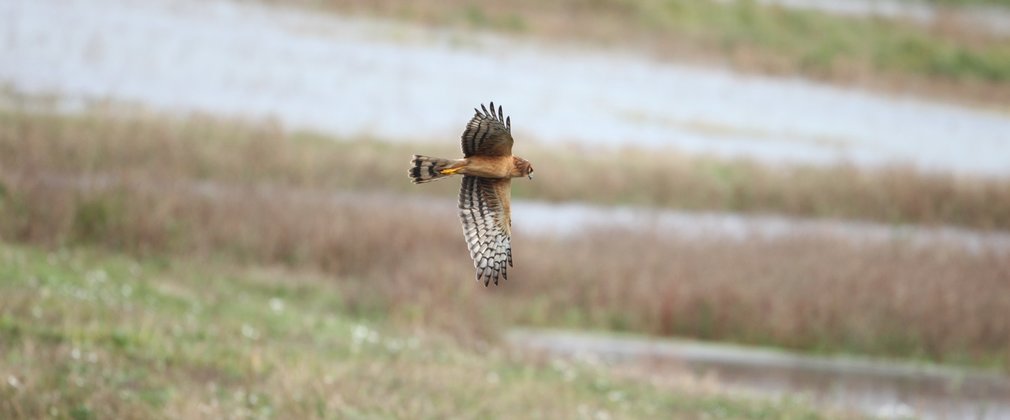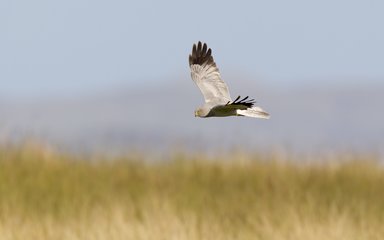
The hen harrier is one of our rarest birds of prey; persecution has led to a severe decline in their numbers. Northumberland is a now key stronghold for hen harriers in England, with a growing number of nests now successful on open habitat within the nation’s forests.
Through the Northumberland Hen Harrier Protection Partnership, we support nest watches, ringing and satellite tagging to allow the population to thrive, ensuring future generations will still have the chance to see these magnificent birds in England.
Hen harrier statistics
- length: 44-52cm
- wingspan: 1-1.2m
- weight: males 300-400g and females 400-600g

Hen harrier habitats and breeding
Hen harriers live in open areas with low vegetation and like to nest on the ground of upland heather moorland during breeding season. In winter they relocate to lowlands, especially close to coastal areas, farmland, heathland, coastal marshes, fenland and river valleys.
Their breeding season starts in April, when four or five eggs will be laid. The chicks fledge between days 37 and 42 but remain reliant on their mother for several weeks following this.
Did you know? Hen harriers are known for their spectacular courtship displays, known as 'sky dancing'.
What do hen harriers look like?
Hen harriers are a slim bird. The males are pale blue-grey whilst females and juveniles are brown; they all have white rumps. The female has a long, banded tail leading to them being known as 'ringtails'.
They fly with wings held in a shallow 'V' as they glide low, searching for food.


